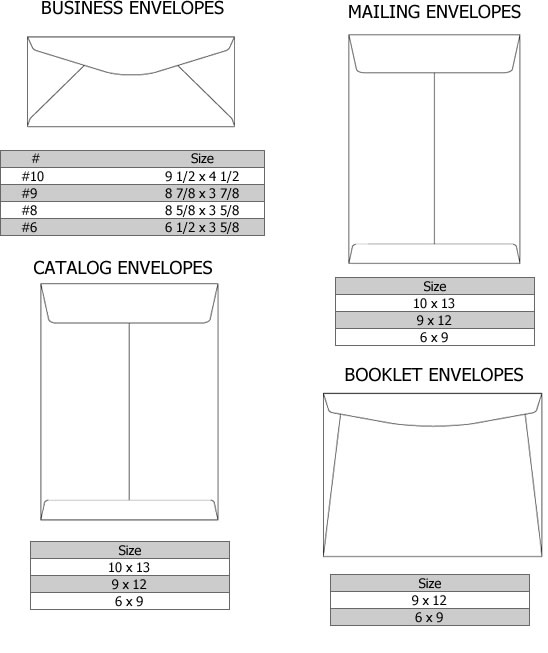
± 3 mm (0.12 in) for lengths and breadths above 600 mm (23.6 in).± 2 mm (0.08 in) for lengths and breadths between 150 mm and 600 mm (5.9 in and 23.6 in).± 1.5 mm (0.06 in) for lengths and breadths below 150 mm (5.9 in).
#ENVELOPE SIZE ISO#
In ISO 216, avoidance particularized for the C envelope sizes are the same for A & B order paper sizes and are in this manner: This is because the output is an error-prone process and mechanical and human errors can always be created. ISO has also stated the maximum errors or tolerances that each size can have during production. For this reason, the sizes are always rounded off to the nearest millimeter.
#ENVELOPE SIZE SERIES#

This helps to make these papers easily resizable. All paper and envelope sizes included in the ISO 216 follow a basic rule that they should have an aspect ratio of √2:1.

The dimensions of Paper Sizes in C Series Envelope Sizes have very precisely defined in the ISO 216.


See Also: Dimensions US & North American Envelope Sizes ISO 216 Standard for C Envelope Sizes Other lower widely secondhand wrapper styles include Booklet, Baronial, and Square. Also, different ranges of US & North American Envelope Sizes, as not contained under ISO 216, contain the three main types of wrapper profitable, notice, and name. The article determines you are accompanying the capacity of each wrapper when distinguished to a sheet of A4 paper. US & North American Envelope Sizes are not covered by ISO 216, that’w why we’ve mentioned them on this page. For this, we created the Standard C Series Envelope Sizes. So, when paper sizes has standardized, it was important that Envelope Sizes too should have standardized. Envelopes are so helpful that we use them everywhere and for all purpose of sending documents. Envelopes have been used for centuries to enclose letters and other documents, and they have proved to be useful for the ease of transportation, maintaining of confidentiality, and prevention from threats to security.


 0 kommentar(er)
0 kommentar(er)
